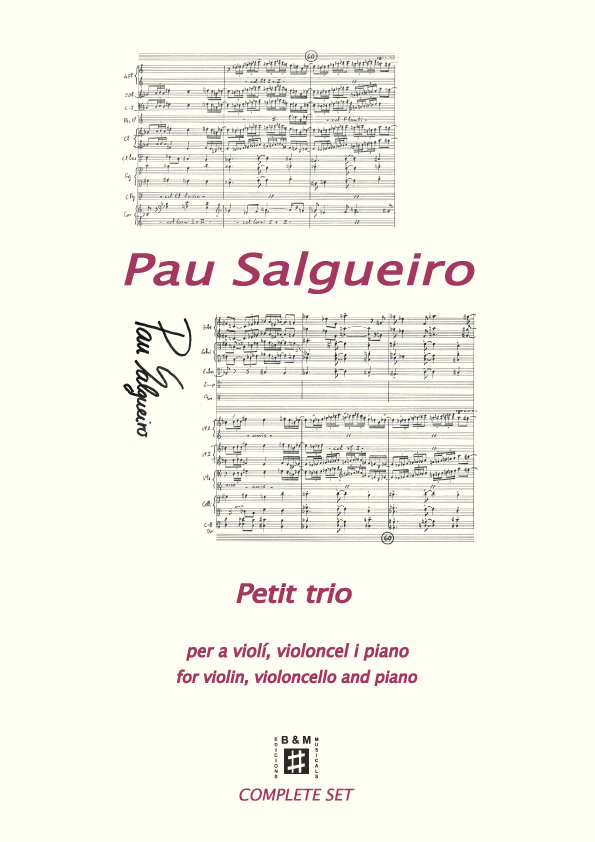Description
Author
Instrumentation
Duration
Pages
Year of composition
ISMN
Ref.
This work was first outlined almost four years ago, during which I have tried to improve it with the help of my teacher of counterpoint, harmony and composition, the young maestro Sergi Puig Serna, to whom I will always be indebted.
The structure of the work, of small dimensions, is the usual one in a trio for violin, cello and piano: an initial movement and a final one with a fast tempo, written in the key of D major, and a central one, slow and reflective, in the luminous key of C major. The choice of these different keys was not a coincidence. At first, I wanted to take the liberty of imitating the keys in which Beethoven wrote his famous piano concerto number 5 “Emperor”. Thus, the first and third movements would have been written in E flat major, and the second in B major, but thanks to the indications I received from the editor of the work, I decided to change the keys to others that were more easily executable.
I conceived the first movement as a “blues” with abundant changes of measure, with the intention that rhythmically, it would not fit strictly into the somewhat monotonous genre of the most traditional “blues”. The contrast between the 6/8 and 3/4 beat generates, in my opinion, a rhythmic contrast that denotes a certain connection with music of Hispanic origin from past centuries.
The second movement tries to imbue with a certain lyricism and nostalgia a work that, at times, seems to focus more on the rhythm and timbre of the whole. This second part is conceived in the manner of a theme and variations, where the theme is certainly not varied and transformed enough, only tangentially.
The third moment tries to be a source of joy and quite a challenge for the performers, especially for the pianist, who will find a section that can become quite a challenge.
Finally, I would like to thank the publisher for their good disposition and interest in my work.
Pau Salgueiro



















There are no reviews yet.